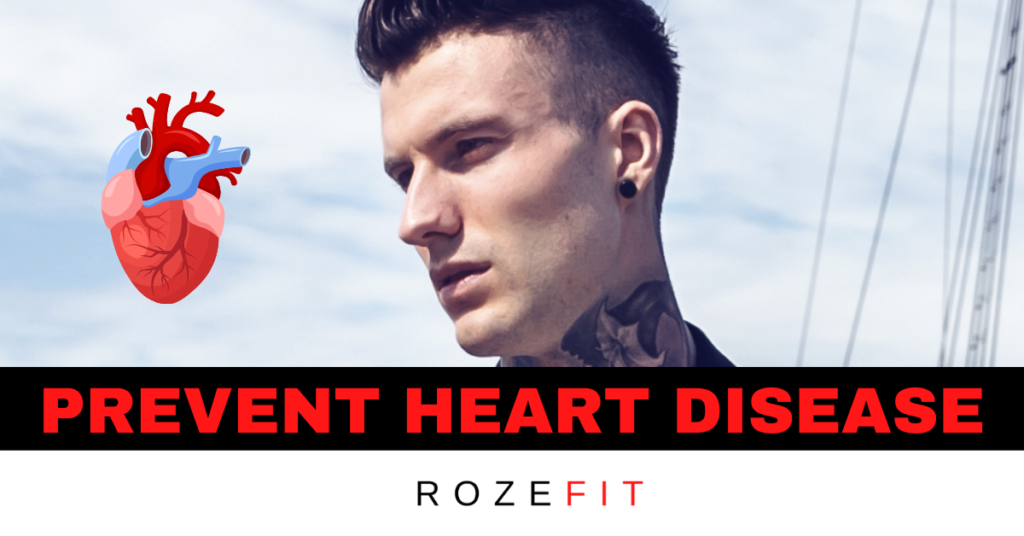The most alarming thing about cardiovascular disease is that it begins far before any clinical presentation of the disease.
In other words, by the time your doctor says you are at risk for cardiovascular disease, the process has been building for years.
But don’t worry because there are many ways that you can prevent cardiovascular disease.
I can’t stress how important it is to get ahead of cardiovascular disease.
More than 50% of people who have their first heart attack die.
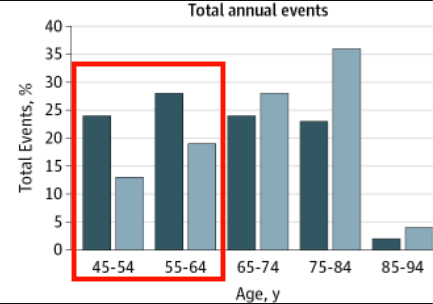
And even more alarming – 50% of men who will have a cardiac event in their lifetime, have it before the age of 65.
And for women, a third of women will have their first event before the age of 65.
So don’t think this stuff just affects older people.
And don’t think that people who have their first heart attack at age 40, spent only a couple of years building up to that point.
The disease takes hold years before the heart attack happens or before you even have symptoms.
Before we dive into the strategies to prevent cardiovascular disease, we need to do a brief overview of what cardiovascular disease is and why it is so important to get on top of.
What is Cardiovascular Disease?
So what exactly is cardiovascular disease?
Well, simply put – atherosclerosis is the result of an ischemic event.
Or in other words, a blockage of blood flow.
This blockage causes a heart attack.
A heart attack’s fatality is all dependent on how much of the cardiac tissue is damaged from a lack of oxygenation.
So now that you know what a heart attack is, you might be asking – what causes it?
What Causes Cardiovascular Disease?
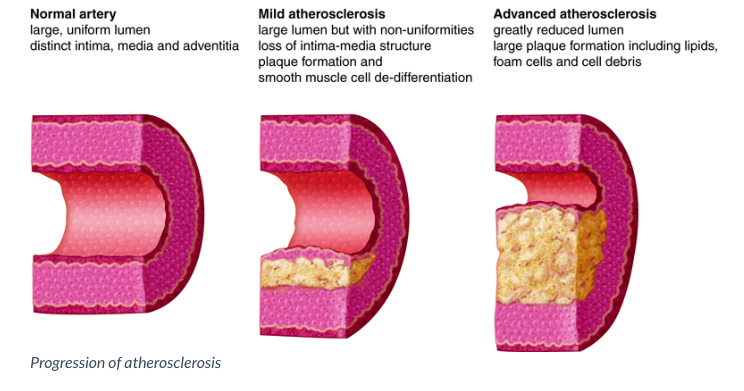
Well, there are many things that cause atherosclerotic cardiovascular disease but ultimately it comes down to one thing.
And that is cholesterol ending up in places where it shouldn’t.
Cholesterol is a lipid that is used to create the cell membrane in the cells of your body.
It is also what hormones are made out of.
It is essential for so many processes in our body and by itself is not a harmful molecule.
Where Does the Cholesterol Come From?
Most people think that cholesterol in your blood comes from the food you eat which isn’t exactly true.
Most of the cholesterol you eat comes in an esterified form which is too large for your gut to absorb.
In fact, your body makes most of the cholesterol it needs.
Cholesterol Transport: Where it Goes Wrong
Because cholesterol is a lipid and therefore not soluble in water, it hires a protein called an apolipoprotein to help transport it throughout your body.
The particle you may have heard of called LDL stands for low-density lipoprotein.
So when the cholesterol contained in a lipoprotein is carried into your vascular system, sometimes it gets stuck in the wrong place.
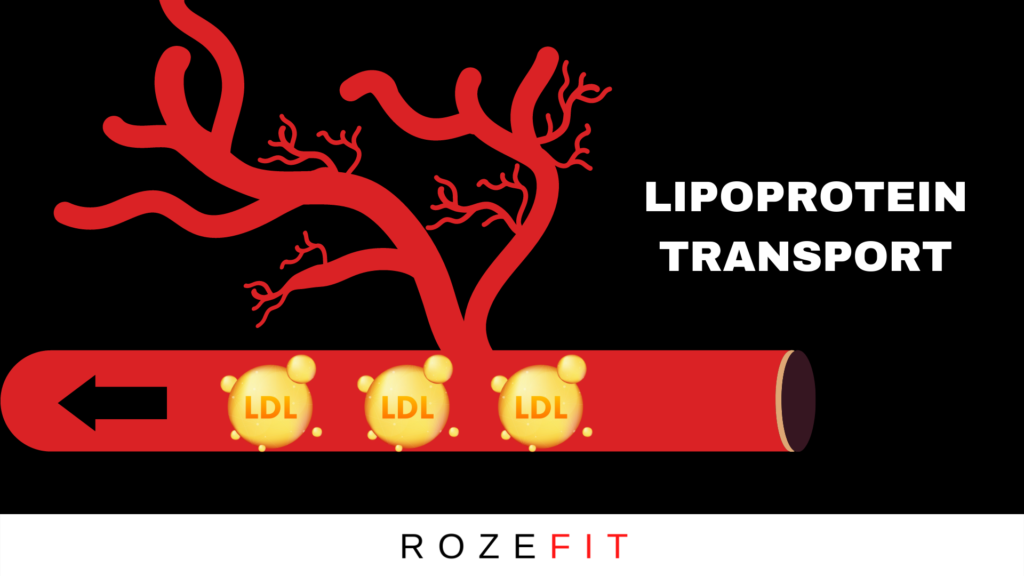
The more of these LDL particles you have, the greater chance there is of some of them ending up in the wrong place.
This is precisely why lower LDL cholesterol is better.
This wrong place where LDL particles end up in your arteries is called the subendothelial space.
The subendothelial space is part of the endothelium which is a protective layer that lines your arteries.

What Happens Next?
When a cholesterol molecule gets stuck here, it gets oxidized and this is the first step to atherosclerotic cardiovascular disease.
What happens next is interesting and quite paradoxical because your body will try to heal itself from the oxidized cholesterol.
But this just creates more damage.
This leads to a whole cascade of processes that ultimately results in the formation of atherosclerotic plaque.
When this plaque builds up enough, it creates lumenal narrowing.
This plaque then ruptures which occludes blood flow in the artery.
And the result?
A heart attack.
When Atherosclerosis Begins
The crazy part is, that this whole process begins decades before the heart attack actually happens.
Take this picture for example which shows an artery of an otherwise healthy 29-year-old female that died from homicide.
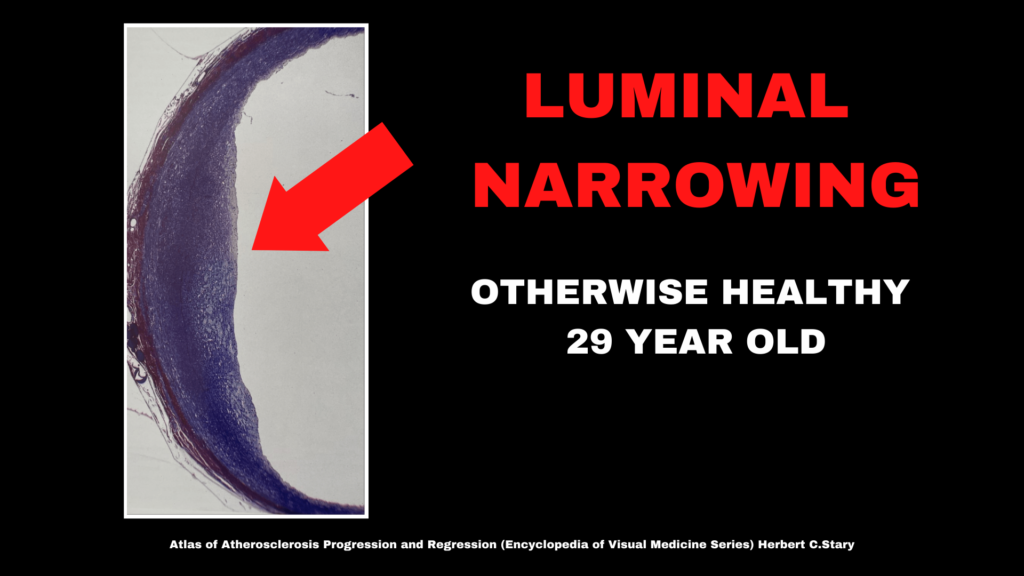
You can see that the thickened part is in the early stages of atherosclerosis.
If you were to do an autopsy on most people in their 20s you would most likely find the early stages of atherosclerotic disease.
This is not an exception to the rule.
Heart disease starts decades before the presentation of symptoms which is why you want to do something about it even if you don’t have any biomarkers pointing to cardiovascular disease.
Cardiovascular Disease Risk Factors
There are many factors that contribute to cardiovascular damage and we went through the major one being endothelial dysfunction caused by cholesterol.
High blood pressure is of course another factor, along with high blood sugar.
All of these risk factors have one thing in common.
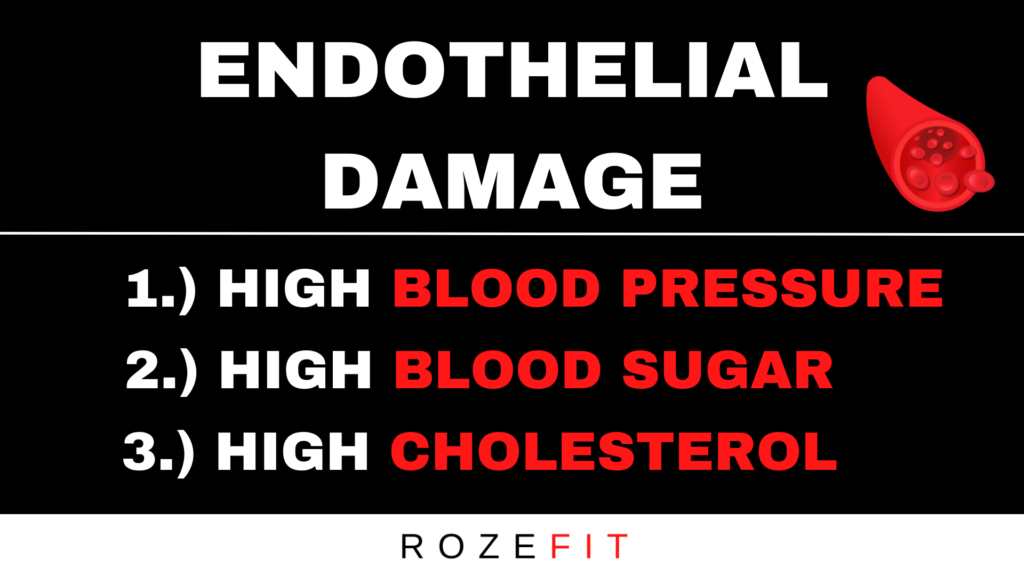
They damage the endothelium of the arteries in one form or another.
But the good news is that there are several things that you can do to prevent a cardiovascular event.
How to Prevent Cardiovascular Disease
The first place I want you to start is by implementing cardiovascular exercise.
In specific, zone 2 training.
You can find out exactly what zone 2 training is and how to do it in the video below.
But basically, it is low-intensity steady-state cardio that lowers your blood pressure, blood sugar, and lowers your body fat.
It is one of the most powerful tools we have to improve metabolic health and reduce the risk of cardiovascular disease.
I have implemented it with all of my clients and it has helped improve their health immensely.
If you need any help with any of this stuff, please feel free to reach out.
It is my mission to help middle-aged people reclaim their health and I’d be happy to help you in any way I can.
You can get a hold of me below or by reaching out via email.
Okay guys, cheers and we’ll see you next time.

